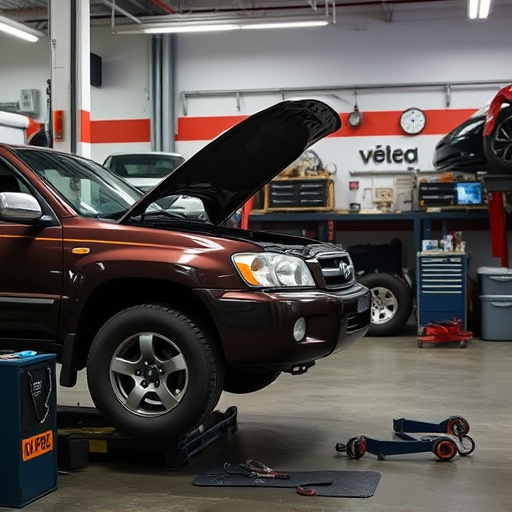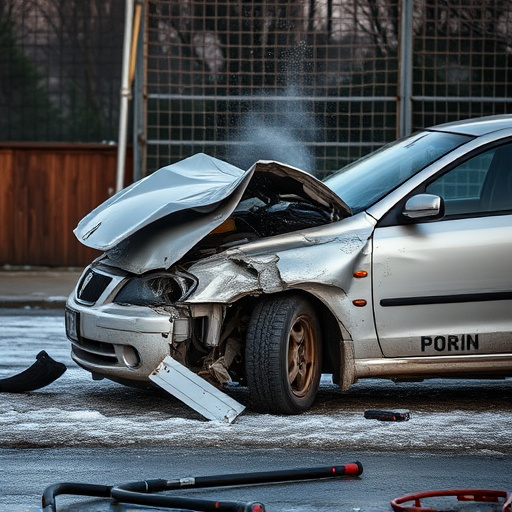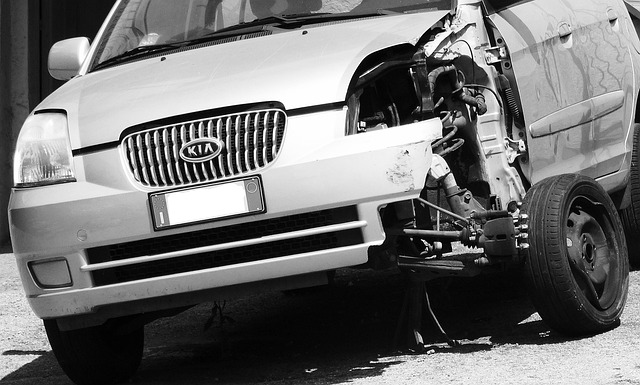The brake system collision check is a critical safety process in vehicle maintenance, with auto body shops conducting thorough inspections of braking mechanisms and related components. Documentation is essential for upholding safety standards, recording each step accurately, and facilitating communication between mechanics and repair centers. Proper documentation enhances vehicle and occupant safety by enabling proactive tracking of maintenance histories and ensuring compliance with industry best practices.
In the realm of automotive safety, understanding and meticulously documenting brake system collision checks are paramount. This article explores the intricate processes behind these checks, highlighting their significance in enhancing overall vehicle and passenger security. We delve into how comprehensive documentation plays a pivotal role in ensuring accurate collision analysis, thereby fostering safer driving conditions. By examining effective practices, we aim to illuminate the importance of precise record-keeping for successful brake system collision check outcomes.
- Understanding Brake System Collision Check Processes
- Role of Documentation in Enhancing Safety Standards
- Effective Documentation Practices for Accurate Collision Analysis
Understanding Brake System Collision Check Processes

The brake system collision check process is a critical step in ensuring vehicle safety and preventing accidents. It involves a thorough inspection and evaluation of a car’s braking mechanisms, including the brakes themselves, hydraulic systems, and related components. This process is particularly important for maintaining optimal performance and addressing potential issues before they escalate. By understanding the intricacies of these checks, auto body shops can offer more comprehensive and effective auto body services.
During a brake system collision check, technicians carefully examine the automotive body and its various systems to identify any signs of damage or wear. This may include checking for leaks in the hydraulic lines, assessing the condition of brake pads and rotors, and verifying the proper functioning of sensors and valves. In the event of a bumper repair or other auto body work, these checks become even more crucial, as they help ensure that all safety systems are operating at peak efficiency.
Role of Documentation in Enhancing Safety Standards

Documentation plays a pivotal role in enhancing safety standards during brake system collision check processes. It serves as a detailed record of every step taken, ensuring that all procedures are followed precisely. This is particularly crucial in the automotive industry where even minor discrepancies can lead to significant accidents. Well-documented checks not only facilitate effective communication between mechanics and repair centers but also provide a clear audit trail for future reference. By maintaining comprehensive records, automotive body shops can demonstrate compliance with safety regulations, which is essential for maintaining customer trust and ensuring the integrity of vehicle body repairs, including fender repair and other intricate vehicle body repair tasks.
Moreover, proper documentation enables efficient tracking of maintenance history, allowing mechanics to identify potential issues before they escalate. This proactive approach reduces the likelihood of future collisions and minimizes the need for extensive repairs. In an industry where precision and safety are paramount, detailed documentation acts as a safeguard, ensuring that every brake system collision check is thorough, consistent, and aligned with best practices, thereby promoting the overall well-being of both vehicles and their occupants.
Effective Documentation Practices for Accurate Collision Analysis

Effective documentation is a cornerstone of any robust brake system collision check process. Detailed and precise records ensure that every step of the inspection and repair is accurately captured, providing a clear roadmap for both current and future reference. This is particularly critical in a collision repair shop where accurate collision analysis can significantly impact safety and vehicle performance. Well-organized documentation enables mechanics to trace back decisions made during repairs, facilitating easier troubleshooting and maintenance in the event of subsequent issues.
Moreover, having thorough documentation enhances communication between auto body services departments and customers. It provides transparency regarding the extent of damage, proposed repairs, and estimated costs. For a car collision repair, this detailed record serves as a reference point for insurance claims and ensures that all parties are aligned on the restoration process. Effective practices include using standardized forms to record inspection findings, utilizing digital platforms for easy retrieval, and maintaining an organized system to store historical data. This not only streamlines operations but also contributes to safer roads by minimizing potential errors in future brake system collision checks.
Documentation plays a pivotal role in ensuring the integrity and accuracy of brake system collision checks, ultimately enhancing road safety. By meticulously recording every step of the process, from initial inspection to test outcomes, professionals can maintain a clear audit trail. This enables efficient problem identification, facilitates data-driven decisions, and promotes continuous improvement in collision check methodologies. Effective documentation practices are essential for maintaining high safety standards, ensuring vehicle reliability, and ultimately saving lives on the road.














